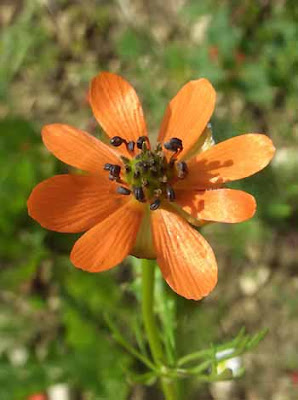
The oleander (Nerium oleander), also rose bay belongs to the dogbane plants (Apocynaceae). All plant parts are poisonous.
Oleander has a large distribution area in a strip of Morocco and southern Spain throughout the Mediterranean, the Middle East, India and China. Trade The previously held view in the wild species occurring in Asia is a separate species (Nerium indicum) is due to the small differences in phenotype not confirmed today.
Oleander contains the cardioactive glycoside Oleandrin. It causes headaches, nausea and cramping in the strength of the venom of the red thimble. For stronger doses can cardiac arrhythmias and conduction blockages occur at heart leading to cardiac arrest and can be fatal. Sometimes the poison goes to work with the plant through small wounds in the skin and can cause irritation. Since the leaves of the oleander extremely bitter taste, the risk is low that small children could eat oleander in the garden. However, even ancient poets write about the effects of the plant, and the Middle Ages, the juice of the plant from mice and parasites have been used. Even the yellow oleander (Thevetia peruviana) is considered particularly toxic.
































